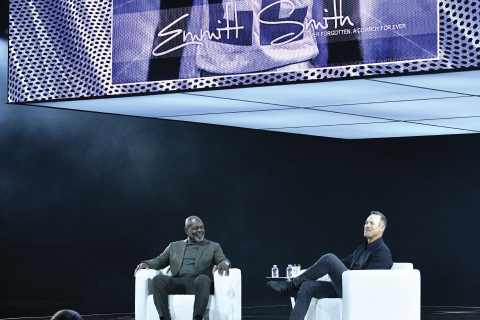SEMA News—September 2011
My First SEMA Show
An Interview With Mike Poore, President of Feed Master Inc.
 Mike Poore, president of Feed Master, was a first-time exhibitor at the 2010 SEMA Show. For this year’s first-time exhibitors, he emphasizes following up on every possible lead. |
||
SEMA News: When did you decide to go to the SEMA Show, and what type of pre-planning did you do?
Mike Poore: I called at 12:00 p.m., the day before the Show and asked: ‘Are there any spaces, by chance?’ They said, ‘Yes, we have a cancellation, and we’ve got a good spot. Would you like to have it?’ I said, ‘I’m going to the bank to get cash, and I’m going to load up my little PT Cruiser.’ Got there about 8:30 p.m. I probably spent about an hour in the evening from 8:30 p.m.–9:30 p.m. setting up. Then I came back the next morning when [the SEMA Show] kicked off. I was still ordering carpet and chairs, and all that was being put in. If you were to go into any of the programs [Show directories] and stuff, no one would ever know I was even there because I booked the day before. So 2011 is really my first year, in a sense. I didn’t get a chance to put my product in the New Products Showcase or any of that kind of stuff last year.
SN: Why did you decide to go to the SEMA Show?
MP: I’ve sold tools to Russia, Peru, Australia and Canada, and the tools would never have hit those markets had it not been for the SEMA Show. I had never done a big show before. Thank God my product is a niche product that nobody else has, and they’ve got to come to me to get it. It’s like having the first ball-peen hammer ever made. I probably did about $30,000–$40,000 off the Show last year. This year, I will double that or even more because I’m more organized now, and I know what my price points are for the wholesalers. I had a big learning curve last year, but I’m there now.
SN: Once the Show opened, what was it like in your booth?
MP: I stayed packed the whole Show. I’m a salesperson. Most inventors of products are not salespeople, and that’s the problem they have. They’re great inventors, they’ve got great product, but they just don’t know how to sell it. I would say to anybody brand new, make sure that if you’re the owner and the inventor of your product that you stay in your booth the whole Show. Do not leave and go walk around because these are all prospective buyers. When they snap a card to you, make sure you grab their hand and pull them into your booth. Spend 10–15 minutes with them. A lot of guys would walk by and I would say, ‘Hey, come over here, let me show you something new. It’s not going to cost you a dime. Check it out.’ You know, those turn into sales, so you’ve just got to be there.
You can have the best booth and you can have it decorated the best, but you’ve got to be able to sell your product. Scatter your product out so they can touch and feel it. A lot of products are just sitting on tables and on countertops, even in the booths. People are handing out business cards and flyers, but I would just like to say to the people getting a booth, really be active in selling your products. Even though I didn’t know sales and marketing, I knew you had to go to the buyer because he has the keys to the safe. If you can’t get the buyer, you’ll never sell your product. Go directly to the buyer.
SN: Is there anything you didn’t have last year or that you weren’t prepared for?
MP: The year before, I was traveling across America. I think I was in Orlando, and people were saying, ‘You’ve got to go to the SEMA Show.’ I wish I had gone a year prior because I would be even further along.
 The Feed Master Wire Feed Tool made its debut at the 2010 SEMA Show. It is designed to help insert wires, cables and hoses inside plastic split-loom tubing. |
|
SN: Ultimately, what’s the most important thing for exhibitors to focus on?
MP: The follow-up afterward. That’s the most important thing in business if you want to keep your customers. I tell people this every day: Make sure you call that customer back. Make sure he knows you care about him. Make things personal. That’s how you
conduct business.
If you don’t do your sales follow-up between the time you leave the Show until about the end of January, that’s the end of your sales from the Show. You’ve got a two-month window. Something else I would say to the new guy: When you come to the Show, have a bunch of product sitting on standby, waiting to go out the door. I pre-ordered 5,000 more products and had them packaged, and they’re sitting in my corporate office right now waiting for this year’s Show. I think being quick, on top of your toes and having those products ready makes a big difference.






